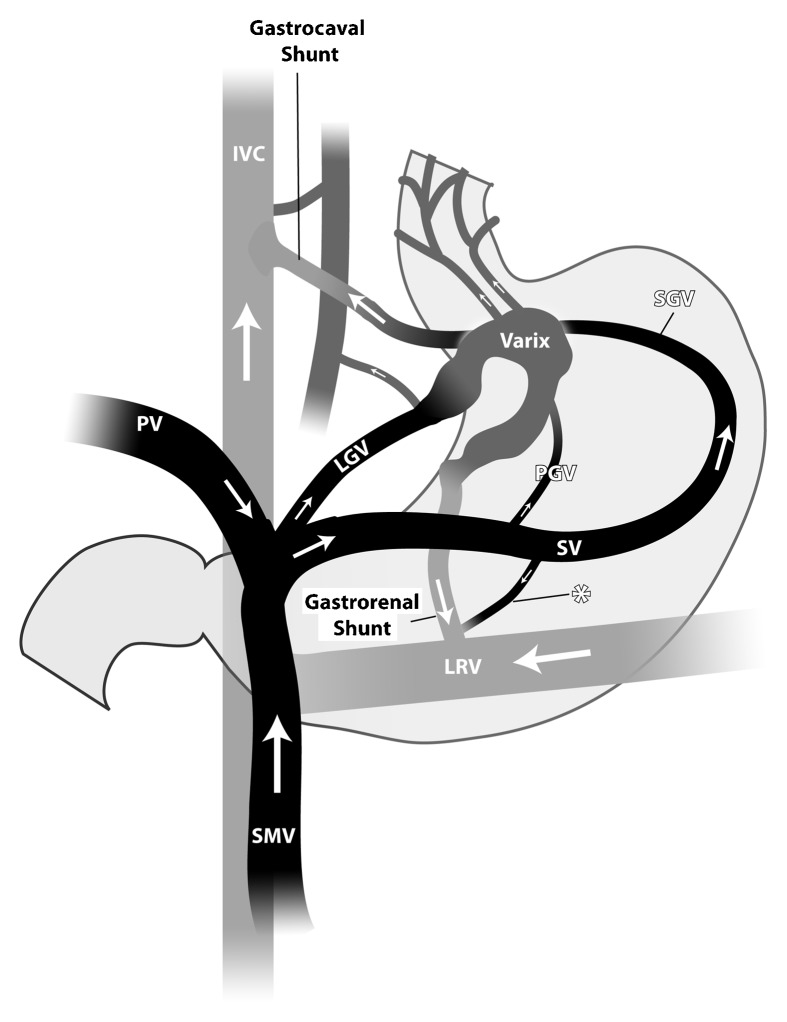Figure 1.
The large and more common gastric varices and shunts. The two main infra-diaphragmatic portosystemic shunts: the gastrocaval and gastrorenal shunts. The common afferent (portovenous feeders) to the gastric varices are left gastric vein (LGV) (also known as the coronary vein), the posterior gastric vein(s) (PGV), and the short gastric veins (SGV). The SGV and PGV arise from the splenic vein (SV), and the LGV arises from the confluence of the splenic vein and the mesenteric vein(s) (SMV). The LGV may also arise from the proximal main portal vein (PV). The efferent limbs of the gastric varices, which drain the gastric varices into the systemic circulation, either drain directly into the inferior vena cava (IVC) (the gastrocaval shunt) or into the left renal vein (LRV) (gastrorenal shunt). The asterisk denotes a direct communication between the splenic vein and the shunt/left renal vein, demonstrating a spleno-renal shunt or a spleno-renal component of the gastrorenal shunt. (Used with permission from Figure 2 of Al-Osaimi AMS, Caldwell SH. Medical and endoscopic management of gastric varices. Semin Interv Radiol 2011;28:273–282.)

